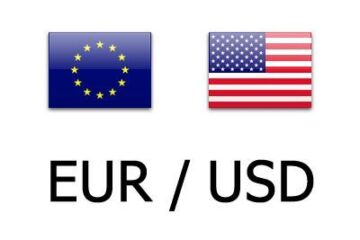Ariel Investments believes in ‘classic Warren Buffett-style value investing’ and sees value continuing to beat growth.
Value stocks have outperformed growth stocks so far this year, after a decade of lagging behind, and the new trend can continue, says Charlie Bobrinskoy, vice chairman of Ariel Investments and portfolio manager of its Ariel Focus Fund (ARFFX) – Get Ariel Focus Fund Inv Report.
Ariel believes in “classic Warren Buffett-style value investing,” he said in an interview with TheStreet.com.
Ariel likes high-quality companies with short-term problems that have driven down the share prices. The firm had $18 billion of assets under management at Dec. 31.
“Value has a chance to reestablish its historical outperformance of the last 100 years,” Bobrinskoy said. “There are lots of great value stocks to buy today.”
Inflation will remain high, continuing to drive up interest rates, he said. One of the main reasons growth stocks outperformed value in recent years was low interest rates.
They made the earnings flow of growth stocks, which often doesn’t come quickly, more valuable. That’s because the return on risk-free assets such as Treasury bonds was low.
But with interest rates rising, growth stocks no longer have that advantage, creating opportunities for value stocks.
“As inflation raises its head, interest rates will go up a lot more,” Bobrinskoy said. “Our companies’ current earnings will become more valuable compared to growth stocks.”
Stocks That Fit the Bill
With inflation and interest rates rising, “you will want companies with real assets and current cash flow,” he said.
Ariel Focus Fund’s two biggest holdings fit that bill: APA (APA) – Get APA Corp. Report, an oil producer, and Mosaic (MOS) – Get Mosaic Company Report, which makes fertilizer.
“Real assets in the ground go up in a time of inflation,” Bobrinskoy said. So it’s no wonder those two stocks have risen in recent months.
Focus Fund also holds some financial-services companies, which tend to benefit from rising interest rates and are trading at low valuations. Higher rates help banks because deposit rates generally climb more slowly than loan and investment rates.
One Focus Fund financial holding is Northern Trust (NTRS) – Get Northern Trust Corporation Report. The bank serves more than half the Forbes 400, does very well when interest rates rise and trades at 13.5 times forward earnings, Bobrinskoy said.
Lazard (LAZ) – Get Lazard Ltd Class A Report, a boutique investment bank, is another Focus Fund financial stock. It trades at 6.8 times forward earnings and is looking at changing its corporate structure in a way that could boost the stock, Bobrinskoy said.
Carveouts and Spinoffs
Another theme for the Focus Fund is carveouts and spinoffs.
Resideo Technologies (REZI) – Get Resideo Technologies, Inc. Report is a thermostat business that was spun out of Honeywell (HON) – Get Honeywell International Inc. Report.
“We like spinoffs because management gets buried in conglomerates,” Bobrinskoy said. “They don’t get the attention and capital they deserve. Now they can allocate capital in the most efficient manner.”
Resideo is trading at 12 times forward earnings.
Nielsen (NLSN) – Get Nielsen Holdings Plc Report, the media audience-measurement company, also is in Focus Fund.
“This one is very controversial. We like to buy what others don’t,” Bobrinskoy said. The bearish case for the stock is that people are watching less television, given the trend toward cord-cutting and streaming.
“But we believe the world isn’t abandoning advertising, and someone has to measure it,” he said. Nielsen has a new technology that can determine whether commercials are being played in different kinds of media.
“We think it will be received well,” Bobrinskoy said.
Last week, Nielsen rejected a buyout offer from a consortium including activist investor Elliott Management.
“We think a deal will eventually get done, but if not, Nielsen has an attractive valuation at 11 times forward earnings,” Bobrinskoy said.
All-cap Focus Fund, with assets of $74 million, has generated a total return of 3.74% year to date through March 23 and 9.67% annualized over the past five years. That compares with negative 6.19% and 15.77% for the S&P 500.


